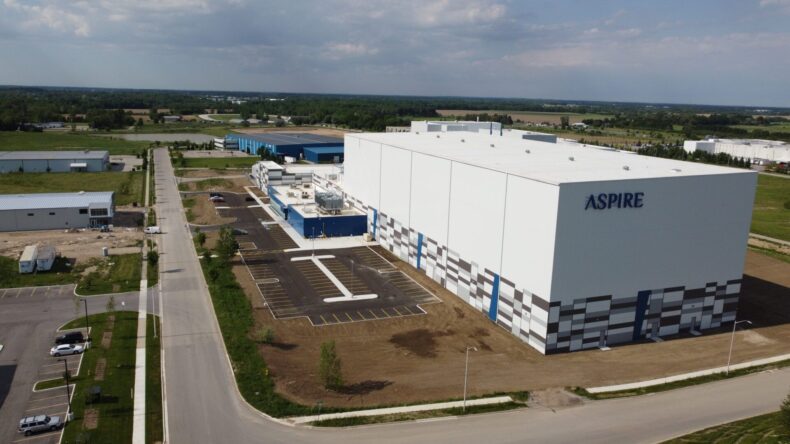Cricket
Exclusive: Aspire Food Group cuts staff, temporarily scales back production at cricket farm

Insect ag pioneer Aspire Food Group has laid off 100 of its 150 employees and is temporarily scaling back production at its new cricket farming facility in London, Ontario, AgFunderNews has learned.
David Rosenberg, a board member at Aspire since 2017, took on the CEO role at Aspire late last year. He told us that the company is “making some improvements to its manufacturing system” to improve yield and “needs to pull back production for about seven months.”
He added: “The company reduced its employee base, mainly in production, while these changes—an updated design of how the crickets live in their habitat—are incorporated.”
According to Rosenberg, who cofounded vertical farming startup AeroFarms, Aspire “will be running the production line four times a week instead of two shifts a day every day. We’re 150 people down to 50 and we plan on hiring back up in July.”
Asked about the company’s financial position, he said: “We have signed a term sheet and are working to close our financing at the end of the month. Demand still remains strong, but we have to scale up and produce consistently.”
One former member of staff told AgFunderNews that everything had happened very suddenly: “We were handed termination letters after our shift; that was shocking.”
The ‘world’s largest cricket processing facility’
Founded in 2012 by five MBA students from McGill University, Aspire acquired the EXO cricket bar brand in 2018 before selling it to Hoppy Planet Foods in 2021 in order to focus exclusively on cricket farming and production.
Billed by Aspire as the world’s largest cricket processing facility, Aspire’s 150,000 sq ft facility in London, Ontario, supplies frozen whole crickets that customers can further process. In early 2023, cofounder and then-CEO Mohammed Ashour (who is now running a new startup in stealth mode, but remains chairman at Aspire) predicted it would get to 100% of production capacity (12,000 tons of crickets) in the first half of 2024.
About 25% of the funding for the plant came from government grants, 30% came from a loan, and the balance from equity, said Ashour in an interview with AgFunderNews in March 2023 in which he claimed to have “significant contractual commitments for the majority of our production.”
He added: “Substantially all of our production is going into petfood in North America but we’re also having exciting discussions with companies outside of North America in human food and petfood.”
Asked about funding at the time, he said: “My expectation is that once this facility starts to generate the unit economics that we’re targeting, we’ll be able to access debt financing and other forms of capital with much greater ease.”










